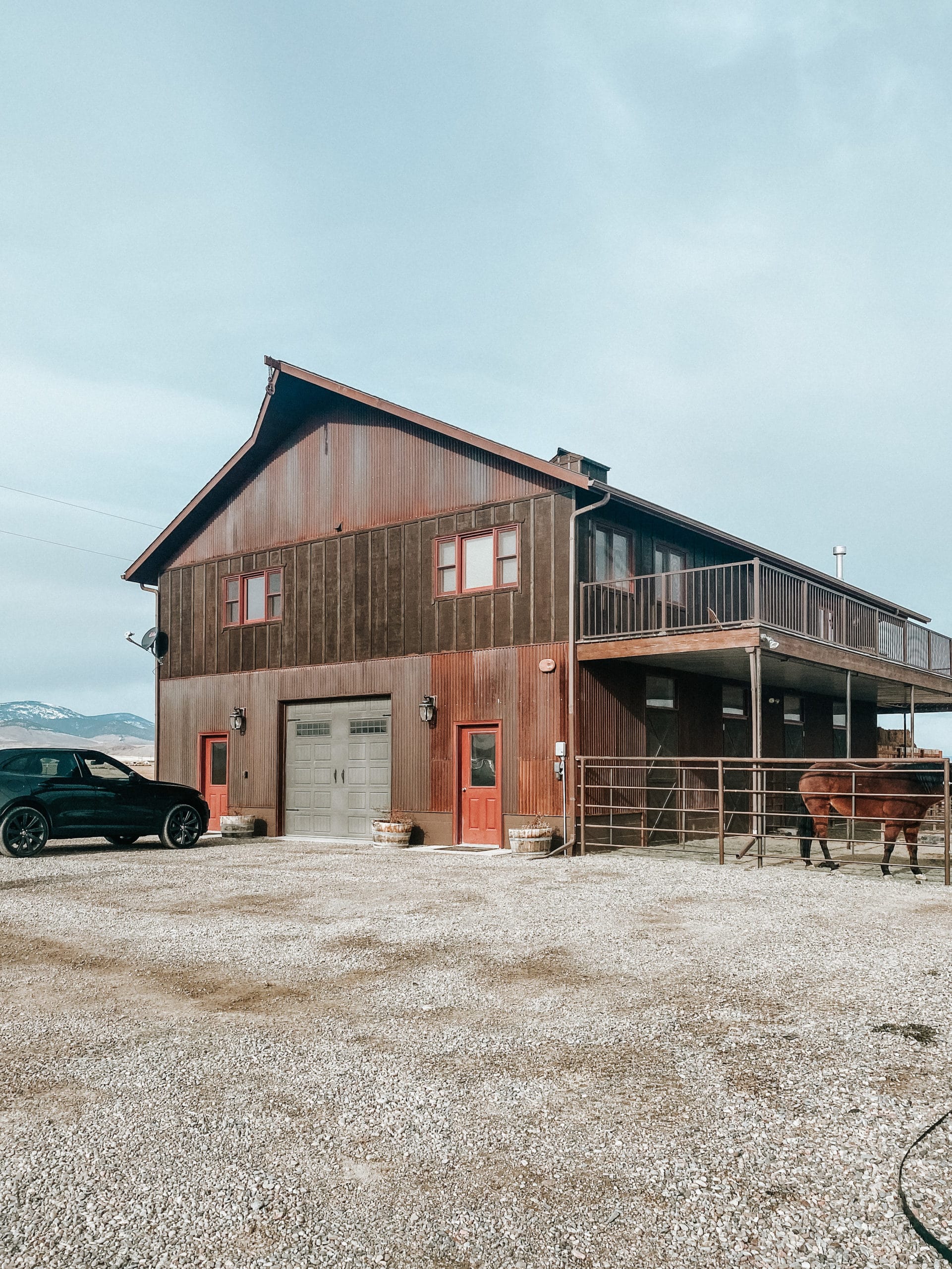Barndominiums Vs. Conventional Residences: a Comprehensive Comparison of Way Of Life and Performance
The choice between barndominiums and typical homes encompasses numerous elements, including way of living preferences and useful needs. Barndominiums are identified by their open layouts and versatility, often attracting those who focus on communal living and flexibility. In comparison, standard homes supply an even more structured atmosphere, which might much better serve family members looking for personal privacy and a sense of history. As we analyze the expense ramifications and environmental considerations, it becomes clear that the choice prolongs past plain aesthetic appeals and functionality; it invites a much deeper exploration of what absolutely defines a home.
Overview of Barndominiums
Barndominiums, a novel housing pattern getting popularity throughout various areas, blend the rustic beauty of barn-style design with the functionality of modern home. These one-of-a-kind structures generally contain a metal or wood structure, combining open layout and high ceilings with energy-efficient functions. Commonly situated on extensive rural residential properties, barndominiums provide homeowners the chance to delight in a peaceful way of life while supplying adequate room for different tasks.
The flexibility of barndominiums prolongs past their visual appeal; they can act as both living quarters and useful areas for leisure activities, workshops, and even local business. Their flexible layout permits very easy customization, accommodating diverse household demands and choices. Several owners appreciate the low maintenance demands connected with steel home siding and roof, adding to long-term toughness.

Characteristics of Traditional Residences
Emphasizing timeless layout and convenience, traditional homes are defined by their unique architectural styles, which typically mirror historical influences and local aesthetic appeals. Common attributes consist of balanced exteriors, gabled roofs, and a focus on craftsmanship, causing a cozy and welcoming ambience.
Typical homes commonly include components such as crown molding, wainscoting, and hardwood floor covering, boosting their traditional allure. They commonly include numerous areas with defined purposes, advertising family members communication while enabling privacy. see website. The design commonly includes formal living and eating locations, which are favorable to amusing visitors and hosting household gatherings
Exterior products such as block, timber, or stone are frequently utilized, contributing to longevity and a feeling of permanence. Barndominium builder. In addition, numerous traditional homes are made with front verandas or stoops, fostering a feeling of community and link with the community
Landscape design plays a significant role in traditional home design, with properly maintained gardens and pathways that boost aesthetic appeal - click here to view. Generally, traditional homes symbolize a sense of fond memories and security, appealing to those that value heritage and a much more organized living atmosphere
Cost Comparison
Normally, an expense contrast in between barndominiums and traditional homes discloses substantial distinctions in building and construction expenses and total financial investment. Barndominiums, frequently constructed from steel or steel frames, commonly sustain lower product and labor expenses than standard homes constructed from wood and brick. The streamlined layout of barndominiums can convert to lowered construction times, even more decreasing labor costs and quickening tenancy.
On average, the expense per square foot for a barndominium ranges from $100 to $150, while traditional homes can vary commonly, usually falling between $150 and $300 per square foot, depending on place, products, and style complexity. This price disparity makes barndominiums an attractive alternative for budget-conscious customers looking for bigger home without sacrificing top quality.
Additionally, barndominiums might cause long-term cost savings via lower upkeep costs, energy effectiveness, and insurance policy rates. Their long lasting building materials commonly call for much less upkeep in time contrasted to typical homes. Nonetheless, it is necessary to think about that while preliminary costs may be lower for barndominiums, the last financial investment will likewise depend upon individual modification and preferred amenities, which can affect the overall expenditure in both housing kinds.
Way Of Life and Space Considerations
When thinking about way of next living and space, barndominiums use a distinct adaptability that charms to a range of property owners. These hybrid structures incorporate property dealing with functional room, often featuring open flooring plans that can be adjusted to match individual requirements. This versatility is specifically helpful for family members or people seeking a tailored living setting, allowing for diverse uses such as office, workshops, or leisure locations.
:max_bytes(150000):strip_icc()/ConvertedBarn-Barndominium-e4e7f75eaca64a9eb5674917da3b20d6.jpg)
Additionally, the aesthetic appeal of barndominiums can provide to both rustic and modern preferences, making them a versatile selection for numerous layout preferences (Barndominium repair). Eventually, the choice between a barndominium and a traditional home frequently pivots on how well each option aligns with the homeowner's lifestyle aspirations and spatial needs, highlighting the relevance of taking into consideration individual priorities in the decision-making procedure
Environmental Effect and Sustainability
The ecological impact and sustainability of barndominiums present compelling advantages compared to typical homes. Largely created from steel and other sturdy materials, barndominiums are typically built utilizing recycled sources, decreasing the need for brand-new products and reducing waste. Their layout normally stresses open areas, which can cause lower energy consumption for heating & cooling compared to typical homes with more segmented designs.
Moreover, barndominiums can incorporate lasting features such as photovoltaic panels, rain harvesting systems, and advanced insulation strategies, boosting their power effectiveness. The convenience of their layout allows house owners to integrate these modern technologies extra flawlessly than in lots of conventional homes, which may need extensive retrofitting.
Furthermore, barndominiums commonly require less sources for building as a result of their easier, much more reliable designs. This not only reduces the carbon footprint related to building yet likewise adds to an extra sustainable way of living. In comparison, standard homes may include higher levels of energy expense and source use throughout their lifecycle, from building and construction to maintenance. Overall, barndominiums stand for a forward-thinking approach to lasting living, aligning with contemporary ecological top priorities.
Final Thought
In recap, the selection between barndominiums and traditional homes hinges on private way of life choices and functional needs. Barndominiums, with their open formats and sustainable products, provide to those looking for versatility and public living.